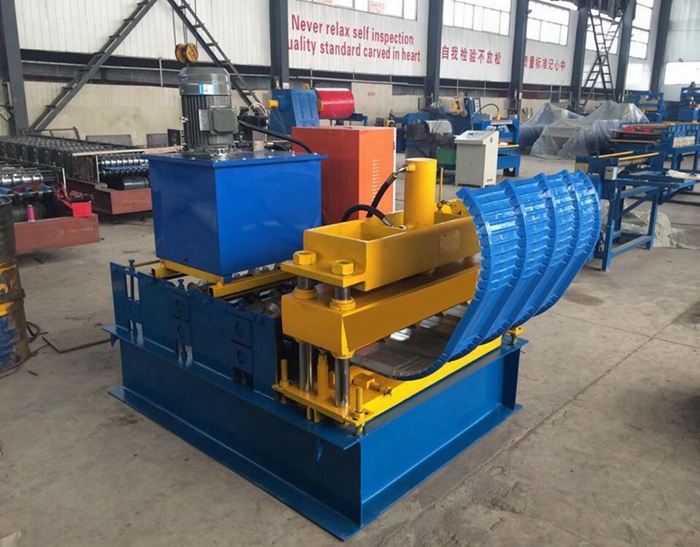roll former
Understanding the Roll Former A Key Tool in Modern Manufacturing
In the realm of modern manufacturing, efficiency and precision are paramount. One of the standout tools that has garnered attention in various sectors, particularly in metalworking and fabrication, is the roll former. This machine plays a pivotal role in the production of a wide range of profiles, including those used in construction, automotive, and HVAC applications.
What is Roll Forming?
Roll forming is a continuous bending operation in which a long strip of metal, usually coiled steel, is passed through a series of rolls. Each set of rolls progressively shapes the metal into the desired cross-section. This process transforms flat sheets or coils into specific profiles without incurring much waste material, which is a significant advantage over traditional cutting methods.
The versatility of the roll former makes it an invaluable asset across various industries
. It can produce a multitude of shapes—from simple channels and angles to more complex configurations like Z-bars and C-channels. The adaptability of the roll forming process means that manufacturers can tailor their products to meet specific design requirements, thereby increasing their competitive edge.
Efficiency and Cost-Effectiveness
One of the primary reasons for the growing popularity of roll forming is its cost-effectiveness. Unlike other metal fabrication techniques, roll forming requires less energy and generates minimal scrap. The efficiency is further enhanced by the ability to manufacture long lengths of product in a single run, reducing the need for frequent changes and downtime. This results in lower labor costs and improved production rates, making it a preferred choice for large-scale operations.
roll former

Moreover, the automation of roll forming machines increases accuracy and consistency in the shaping of materials. Advanced CNC (Computer Numerical Control) systems allow for precise adjustments to be made quickly, ensuring that even complex profiles can be produced with minimal variance. This high level of repeatability is crucial, especially when large quantities of materials are needed for projects.
Applications Across Industries
The applications of roll formers are extensive. In construction, they are used to create roofing panels, wall studs, and trusses, playing a critical role in the framework of buildings. The automotive industry also benefits significantly from roll forming, as it allows for the creation of lightweight components that maintain strength and durability. In HVAC systems, roll-formed metal ducts and supports contribute to efficient air distribution and system performance.
Additionally, roll forming can be employed in making products for energy efficiency, such as solar panel frames and wind turbine components, aligning well with the global push towards sustainable practices.
Conclusion
As industries continue to seek innovative ways to improve their processes, the roll former stands out as a key technology. Its myriad benefits—ranging from enhanced efficiency and reduced waste to the production of highly accurate components—ensure its relevance in modern manufacturing. The ability to adapt to various needs and produce high-quality products positions the roll former as an indispensable tool for businesses striving for excellence in their respective fields. Whether in construction, automotive, or beyond, roll forming is paving the way for advancements in production techniques and material usage. As technology advances, we can only expect to see even more refined and efficient roll forming processes in the future.
-
Top Drywall Profile Machine Models for SaleNewsJun.05, 2025
-
The Role of Purlin Machine in Modern Structural BuildingNewsJun.05, 2025
-
The Advantages of Investing in a Metal Roof Sheet Making MachineNewsJun.05, 2025
-
Key Features of Hydraulic Bending MachineNewsJun.05, 2025
-
Innovations in Standing Seam Metal Roof Machine TechnologyNewsJun.05, 2025
-
High - Performance Roof Panel Machine for SaleNewsJun.05, 2025
-
Key Features to Look for in a Roof and Wall Panel MachineNewsMay.23, 2025








